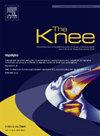MRI templating for Oxford partial knee replacement femoral component – a novel sizing method
IF 2
4区 医学
Q3 ORTHOPEDICS
引用次数: 0
Abstract
Background
Correct sizing of Oxford Medial Unicompartmental Knee Replacement (OUKR) femoral component can be challenging. Incorrect sizing can increase risk of bearing dislocation or revision. This study aimed to assess the accuracy of a simple but novel templating method in sizing the femoral component in OUKR.
Methods
A single surgeon retrospective study was performed reviewing all patients who underwent OUKR between April 2017 and May 2024 comparing those sized with the templating method with those sized by standard means. The method consisted of a circular fit over the posterior medial condyle of the femur on sagittal T2-weighted MRI sequence from which the component size was templated. Comparison between the groups was made by analyzing post operative radiographs for correct component sizing. Correctly sized components had a posterior condylar overhang of 0–4 mm. An interobserver reliability assessment of the templating method was conducted.
Results
121 OUKR met the selection criteria with 61 in the MRI templated group and 60 in the standard group. The MRI group was significantly more likely to have correctly sized femoral components than the standard group (72 % vs 54 %, p = 0.04). Average deviation from the correct size was also significantly lower in the MRI group (1.7 mm vs 2.3 mm, p = 0.01). Interobserver reliability was 75.9 % with Cohen’s Kappa 0.59 (p = 0.09).
Conclusion
Our novel preoperative MRI templating technique is a simple and useful tool that can improve sizing accuracy in UKR when compared with traditional intraoperative sizing methods.
牛津部分膝关节置换术股骨假体的MRI模板-一种新的定尺方法
背景:牛津内侧单室膝关节置换术(OUKR)股骨假体的正确尺寸可能具有挑战性。不正确的尺寸会增加轴承脱位或矫正的风险。本研究旨在评估一种简单但新颖的模板方法在确定OUKR股骨假体尺寸时的准确性。方法回顾性分析2017年4月至2024年5月期间所有接受OUKR手术的患者,比较模板法和标准方法的大小。该方法包括在矢状面t2加权MRI序列上对股骨后内侧髁进行圆形配合,并从中模板化组件大小。通过分析术后x线片比较各组间正确的假体尺寸。正确大小的假体后髁悬垂0-4毫米。对模板法进行了观察者间信度评估。结果121例OUKR符合选择标准,MRI模板组61例,标准组60例。MRI组股骨假体尺寸正确的可能性明显高于标准组(72% vs 54%, p = 0.04)。MRI组与正确尺寸的平均偏差也显著降低(1.7 mm vs 2.3 mm, p = 0.01)。观察者间信度为75.9%,Cohen’s Kappa为0.59 (p = 0.09)。结论与传统的术中定尺方法相比,术前MRI模板技术是一种简单实用的工具,可提高UKR的定尺准确性。
本文章由计算机程序翻译,如有差异,请以英文原文为准。
求助全文
约1分钟内获得全文
求助全文
来源期刊

Knee
医学-外科
CiteScore
3.80
自引率
5.30%
发文量
171
审稿时长
6 months
期刊介绍:
The Knee is an international journal publishing studies on the clinical treatment and fundamental biomechanical characteristics of this joint. The aim of the journal is to provide a vehicle relevant to surgeons, biomedical engineers, imaging specialists, materials scientists, rehabilitation personnel and all those with an interest in the knee.
The topics covered include, but are not limited to:
• Anatomy, physiology, morphology and biochemistry;
• Biomechanical studies;
• Advances in the development of prosthetic, orthotic and augmentation devices;
• Imaging and diagnostic techniques;
• Pathology;
• Trauma;
• Surgery;
• Rehabilitation.
 求助内容:
求助内容: 应助结果提醒方式:
应助结果提醒方式:


